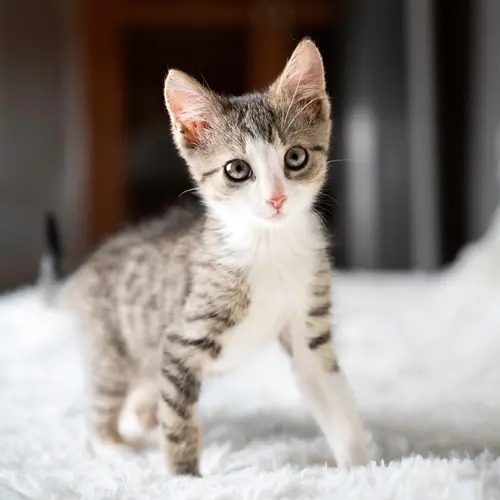Hermit crabs are social creatures that can make great family pets. Hermit crabs live on land and use empty shells for protection. If you take proper care of them, a hermit crab can be your companion for many years.
Before You Get a Hermit Crab
It’s important that you have all the supplies to safely welcome home your new hermit crab. The most important elements are a secure, heated enclosure and food. But once you’ve got the basics, there are lots of ways to make the tank more visually appealing.
Hermit crab housing. Hermit crabs do best in closed glass tanks. Since they’re tropical creatures, their space needs to stay moderately warm—between 72 and 80 degrees Fahrenheit is ideal. They also depend on light to regulate their behaviors, so experts recommend turning on a fluorescent or LED bulb in their tank for 8-12 hours a day to mimic natural light cycles.
Habitat supplies. To complete your hermit crab’s habitat, it’s important to have a floor of either soil or sand, some stimulating items, and other care items. The following list includes some of the supplies you’ll need:
- A floor material such as soil or sand
- Stimulating items such as sea sponges, rocks, or something to climb
- Shells for when they outgrow their current one
- Non-metal food and water bowls
- Heater
- Thermometer
How to Care for a Hermit Crab
Feeding hermit crabs. In the wild, hermit crabs eat at night, so it’s recommended to feed your pets at night as well. Feed them a balanced diet. If they aren't eating pelleted food, you may want to add water to soften. Supplement your hermit crab's diet with fruits and leafy vegetables like kale. They take small bites and eat slowly, but any leftovers in the morning should be removed. Last, always make sure they always have fresh, clean, chlorine-free water.
Socializing hermit crabs. Hermit crabs are social creatures that like to live in large groups. Because of this, they can get lonely if left alone for too long. One option to prevent loneliness is to get multiple crabs. If you do add one or more hermit crabs to an existing tank, keep an eye out for fighting.
There are multiple reasons crabs might fight, including not having enough food, water, or space. Some hermit crabs are aggressive with others and may try to steal shells. Having spare shells in the aquarium can help prevent this type of bullying.
Taking your hermit crab out of its enclosure to play is another way to socialize it and prevent loneliness. When handled with care, they’re gentle creatures that kids and adults alike can enjoy spending time with.
Cleaning hermit crabs. Your crabs will clean themselves if they’re provided with a conditioned freshwater and saltwater bowl to bathe in. Keeping a sea sponge in the tank also helps them stay clean, as it increases the humidity in the enclosure.
Normal molting behavior. About twice a year, hermit crabs molt or shed off their outer skin. Hermit crabs become less active when molting. They won’t eat much but they will drink lots of water. This process is normal and it takes several weeks for their new skin to harden. During this time, leave the pets alone. Also, don’t remove the shed skin from the tank, it’s normal for hermit crabs to consume it because it is a rich source of calcium.
After molting, your hermit crab will change into a new, larger shell. Be sure to have a few ready so they can choose the best fit. This process of growth, shedding skin, and changing shells, is a continuous and repeating process for hermit crabs.
Signs of a health problem. The most common health problems for pet hermit crabs are stress and poisoning. If a crab is stressed, it will become inactive, slow, and may leave its shell for a long period of time (without taking another one, like it does when molting). Hermit crabs can become stressed by bullying, extreme hot or cold temperatures, loneliness, or overcrowding.
Poisoning can happen accidentally if hermit crabs are misted with water-containing chemicals. A poisoned hermit crab will drop its shell and not take another one. If either of these behavior patterns happen, see a veterinarian who specializes in hermit crab care.

